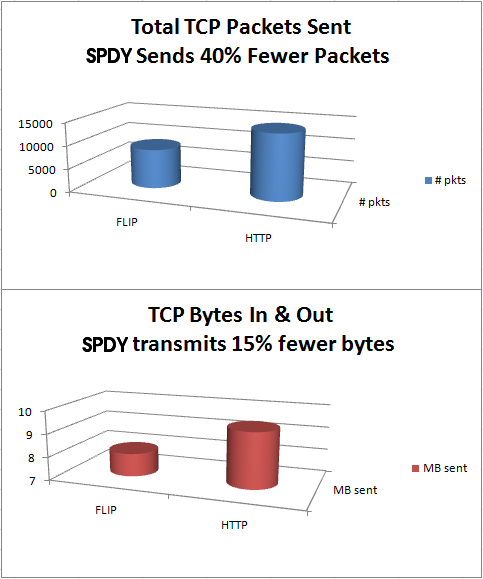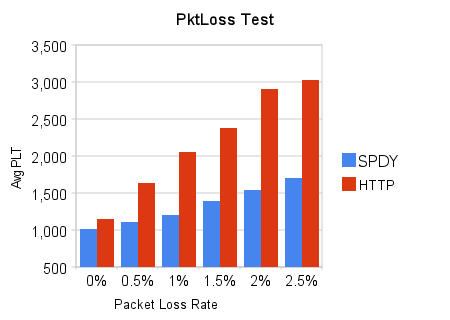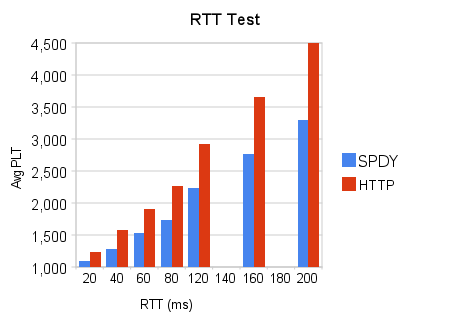SPDY data
Overall network efficiency of SPDY compared to HTTP. A lot of the speed benefits of flip come from simply using the network more efficiently. Using fewer connections means fewer packets. Using more compression, means fewer bytes. Due to multiplexing, SPDY turns HTTPs many virtually half-duplex channels into a single, full duplex channel.
When used loading our top-25 web pages, SPDY sent 40% fewer packets and 15% fewer bytes than the same pages loaded over HTTP.
Here is a graph of SPDY and HTTP, measuring the top-25 web pages as the packet loss rate varies. Packet loss is an area ripe for more research; generally we believe global worldwide packet loss is ~1 to 1.5%. Some areas are better, and some areas are worse.
Here is a graph of SPDY and HTTP average page load times as the RTT (round-trip time) varies. RTT can be as low as 5-10ms for high speed networks, or 500ms for some mobile or distant networks. Satellite links, known for their high throughput, still have high latency, and can have RTTs of 150ms or more. Generally, a 20ms RTT is great, 50ms RTT is not too shabby, and a 115ms RTT is about average.


